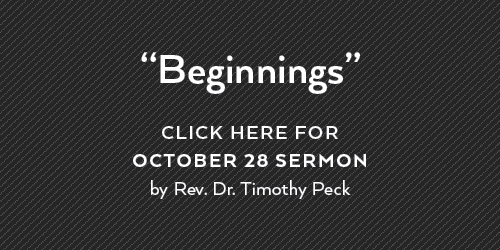Monday
Exodus 3:13-15; John 6:28-51; John 18:1-8
Happy New Year! We kick off 2022 amidst the season of Epiphany—capping Christmas and its revelation of God incarnate as Jesus of Nazareth—exploring Jesus’ “I AM” statements in John’s Gospel. This week emphasizes Christ’s polarizing claim, “I AM the Bread of Life” (John 6:35, 48). Let’s start with some background regarding Jesus’ “I AM” statements.
When Moses first encountered God in the burning bush and asked the LORD His name, God Self-identified “I AM WHO I AM” (Exodus 3:14). This might seem a strange, evasive response. “I AM” as professed by Yahweh, however, is rich with meaning regarding God’s exclusive uniqueness.
“I AM is the ultimate statement of self-sufficiency, self-existence, and immediate presence. God’s existence is not contingent upon anyone else. … He [is and] will be the eternally constant God … ever-present and unchangeable, completely sufficient in Himself to do … and to accomplish what He wills. … No matter when or where, He is there.” (GotQuestions?org) “God is completely [sovereign]. … There is no past or future tense in the Divine vocabulary. When God … employ[s timeframes], it is [an] accommodation to our [limitations].” (David Guzik)
“He is the God of the present (I AM), the God of the past, the Creator (I cause to be), and the God of the future (I will be), the One who is, the One who was and the One who is to come (Revelation 1:4), the Almighty (Revelation 1:8), the [eternal] One who has been revealed in Jesus Christ.” (Peter Pett) One instance wherein “Jesus [applied] to Himself the name I AM … [was] in the Garden of Gethsemane (upon His betrayal, the eve of His crucifixion). When the mob came to arrest Jesus (John 18:1-8), He asked them whom they sought. They said, ‘Jesus of Nazareth,’ and Jesus replied, ‘I AM’ … [upon which] they drew back and fell to the ground (overwhelmed by His declaration’s power).” (GotQuestions?org)
Cults denying Christ’s divinity maintain, “Jesus never claimed deity.” This 8-week series debunks their ruinous error. Jesus is the great I AM who “came to seek and save the lost” (Luke 19:10). Each of us knows others needing such good news—share it lovingly!
Questions
What is the significance of Jesus’ “I AM” statements? What does the name “I AM” tell us about God? Why is an area where true Christianity differs from many cults regarding “I AM”?
Prayers for Glenkirk Mission Partners
As the new year begins, please pray for our mission partners located near and around the globe. Pray that God would give them a fresh vision for the new year and many opportunities to share the love of Christ to those around them.
Tuesday
Nehemiah 9:9-15, 20-21; John 6:30-40, 47-51
Imagine the confusion felt by Hebrews during Jesus’ time! They received the Ten Commandments and other laws through Moses (Exodus 20-23) about 1300 years earlier. God had worked many miracles among them, affirming Israel as His unique, chosen people. Then a homeless carpenter from Galilee—literally “the sticks” (“Nazareth” derives from the Hebrew word for “branch”)—arrives introducing a radically new Way while exorcizing demons, healing, doing other messianic miracles and teaching authoritatively.
The Christ was long-anticipated among 1st century Jews; various false Messiahs appeared on the scene. The Israelites, under Roman occupation since 64 BC, generally expected a messianic warrior-king who would liberate them from Roman oppression. Instead, Jesus was the peaceful Servant and Teacher emphasizing the needed renewal of their hearts.
“[John 6 features] the third of the instances in this Gospel in which our Lord pointed to Old Testament incidents and institutions as symbolizing Himself. … [Jesus] likened Himself to the ladder that Jacob saw (Genesis 28:12, John 1:51) … the [pathway] between heaven and earth. … He likened Himself to the brazen serpent lifted in the camp (Numbers 21:9, John 3:14-15) [and thereby] claimed to be the Healer of a sin-stricken and poisoned world. And now, with an allusion both to the miracle and to the Jewish demand for the repetition of the manna sign (Exodus 16:4-18), He claims to be the true Food for a starving world.” (Alexander MacLaren)
Many rejected Christ (John 6:66) upon His declaration, “I AM the Bread of Life” (6:35, 41). Perhaps they were appalled when Jesus taught that His follower “feeds on My flesh and drinks My blood” (6:54), misinterpreting Him grotesquely. They missed that the manna God used to feed the trekking Israelites (Exodus 16) and the tabernacle’s “showbread” (Exodus 25:30) foreshadowed Jesus, picturing how He alone could satisfy spiritually and eternally. They would miss the broken bread representing the Savior’s crucified body as He reinterpreted the Passover meal (Matthew 26:26).
“Evangelism is just one beggar telling another beggar where to find bread.” (D.T. Niles) Meet your Jewish friends in the Passover’s imagery; gently point them toward “the Bread of Life.” Embrace this yourself when receiving Communion.
Questions
How was Jesus different than the Messiah many ancient Jews expected? Why were so many former disciples put off by Jesus’ “I AM the Bread of Life” declaration?
Prayers for Glenkirk Mission Partners
Please ask that the Lord would give our mission partners discernment in how to minister in the aftermath of COVID. Pray that they would meet each challenge with wisdom, care, and patience. Pray that the Lord would provide refreshment and rest for this new year.
Wednesday
Exodus 16:4, 14-16, 31-32; John 6:41-51
Yesterday’s devo emphasized Jesus as “the Bread of Life” and touched upon manna foreshadowing God’s eternal provision in Christ. Bread provides interesting messianic imagery—let’s touch upon this a bit and then consider some comparisons between manna and Jesus’ mission.
“Every Sabbath the (Levitical) priests put … loaves of bread on the table of the bread of the Presence in the temple (Leviticus 24:5-9) … as a token of gratitude for [God’s] provision for His people.” (Duane A. Garrett) The name of Jesus’ birthplace, Bethlehem, means “House of Bread.” Jesus fed the 5,000 (Mark 6) and later 4,000 (Mark 8) with several loaves of bread and two fish. At the Last Supper, Jesus took the Passover bread and broke it, saying, “This is My body, which is given for you; do this in remembrance of Me” (Luke 22:19).
As addressed yesterday, manna, like the Messiah Himself, came “down from heaven” (John 6:33). Though miraculously provided daily by God amidst the Jewish exodus, the manna appeared on the ground like common morning dew (Exodus 16:13-14); Jesus looked ordinary, much like any other man (Isaiah 53:2). The Jews did not know what manna was when God first provided it (Exodus 16:15-16); they generally did not recognize Jesus as Messiah—“He came to His own, and His own people did not receive Him” (John 1:11). While journeying to the Promised Land, the Hebrews gathered manna each non-Sabbath morning; Jesus taught in the Lord’s Prayer, “Give us this day our daily bread” (Matthew 6:11), and Lamentations 3:22-23 declares, “His mercies never … end; they are new every morning.”
Daily manna sustained the Jews physically, though all but two of the older generation (Joshua and Caleb) died in the wilderness due to unfaithfulness; Jesus promises eternal life to those who receive Him as Lord and Savior. The Jews grumbled about manna (Numbers 11:6) and also about Jesus (John 6:41); the Jewish leaders of Jesus’ time, however, went beyond mere grumbling, delivering Him to Pilate for execution.
Is the “Bread of Life … that comes down from heaven” (John 6:48-49) your “daily Bread,” or Someone you think about mostly on Sundays? Do you partake of God’s Word daily?
Questions
How are some of the Old and New Testament rites and events regarding bread rich in messianic imagery? What are some parallels between God’s provision of manna during the Jewish exodus from Egypt and Jesus’ first coming mission?
Prayers for Glenkirk Mission Partners
Please lift up Glenkirk’s local partners: Homework House, Shepherd’s Pantry, Living Stones Ministry, and ECO’s Church Plants. Pray that God would bless their ministries and that the Lord would bring many volunteers to serve with each of them.
Thursday
John 6:44-45; Luke 13:34-35; John 5:2-9
John 6:44-45 shares truth stirring a longstanding controversy in Christendom: “No one can come to Me unless the Father … draws them. … Everyone who has heard … from the Father comes to Me.” This passage features the tension between God’s sovereignty (complete, autonomous control over everything) and humankind’s free will (ability to choose, including rejecting God Himself).
Arminian believers emphasize “the Father draws them”—“drawing” is different than compelling, emphasizing our responsive role in accepting Christ. They stress that love must be voluntary, thus God leaves room for our choices and related “cooperation” in responding. Calvinist Christians accentuate that God does everything needed, that the “spiritually dead” can play no role in their own salvation. Both sides agree that God has done all of the saving work via Christ’s crucifixion and resurrection; they also embrace that God initiates and inspires the faithful response of Christians.
“To be biblically faithful, a Christian has to [grapple with] a great paradox. … To be an image-bearer of the Almighty Creator … is to be a volitional being who … can … [and] must make choices. … [At the same time, however] we do not have the capacity as inheritors of original sin to choose God; rather; we will use our free choice to rebel against Him unless He, seeing us as an object of His mercy, draws us.” (Natalie Regoli)
I find Jesus’ attitude toward Jerusalem relevant here. He lamented unfaithful Israel’s rejection upon approaching Jerusalem during Holy Week: “O Jerusalem, Jerusalem …! How often would I have gathered your children together … and you were not willing!” (Luke 13:34). Similarly, God repeatedly bemoans the Israelites’ waywardness throughout the Prophets’ books. I don’t believe this is “play-acting”—God initiates, “unwilling that any should perish” (2 Peter 3:9), while lovingly, often painfully, honoring our resultant response.
Consider Jesus’ profound question to the “man … who had been an invalid for thirty-eight years”: “Do you want to be well?” (John 5:5-6). God’s mercy and healing are available to any who would accept them; however, love requires that it be received freely. Do you know others who don’t recognize that they are “unwell” or who seek healing while disregarding the Healer? Help them see the Way to wellness.
Questions
How do you reconcile the tension between God’s sovereignty and humankind’s free will? What is particularly profound about Jesus’ question, “Do you want to be well?” as He engaged the disabled man at the pool at Bethesda? How might this question apply to anyone who has yet to accept Christ?
Prayers for Glenkirk Mission Partners
Pray for Glenkirk’s global partners: Three Angels Haiti, GTi HOPE, For His Children, PARS Theological Centre, and African Enterprise. Ask that the Lord would strengthen and protect them as they experience various challenges with COVID restrictions, government instability, and persecution. Pray for a double portion of joy to overflow from them in this next season.
Friday
John 6:44; 1 Corinthians 15:12-26; Acts 23:6-10
We addressed the first part of John 6:44 yesterday. Today let’s consider its second half: “And I will raise them up on the last day.” Christ’s resurrection is foundational to Christianity—Jesus is the only faith Founder who rose from the dead and lives still, something Mohammad, Buddha, Confucius, etc., could not claim. When Jewish leaders challenged Jesus’ authority in cleansing the temple and demanded a related sign, He answered, “Destroy this temple (My body), and in three days I will raise it up” (John 2:18-19). Even non-Christian sources such as ancient Jewish historian Flavius Josephus affirm Jesus’ resurrection.
While marveling at the Lord’s resurrection, it is amazing also to consider our resurrection likewise in glorified bodies upon His return—the Bible promises “when He appears we shall be like Him” (1 John 3:2). Jesus is “the firstfruits of those who have fallen asleep” (1 Corinthians 15:20), another means by which He is “the Way” (John 14:6).
Jesus is not only our Prototype, but creation’s also. God will redeem and re-create the universe, forming “a new heaven and a new earth … the holy city, new Jerusalem, coming down out of heaven from God, prepared as a Bride adorned for her Husband” (Revelation 21:1-2). Jesus embodied the physical and heavenly, and one day so shall we along with all of creation!
The Sadducees were ancient Israel’s intelligentsia. Like contemporary liberals they dismissed miracles, embracing “scientific,” naturalistic explanations for everything. They rejected resurrection and Scripture describing miraculous events. When arrested for rabblerousing and brought before the high Jewish court, Paul—recognizing the council’s makeup of Pharisees and Sadducees—cleverly referenced resurrection, and the resultant dispute prompted the Sanhedrin to dismiss his case (Acts 23:6-10).
Consider the hopelessness not only in facing this life without Jesus and God’s blessings, but also in seeing the present world and its condition as “all there is.” For unbelievers, this is as good as it gets! We have a hope and “the peace of God, which surpasses all understanding” (Philippians 4:7) here and now, but also in knowing that God will redeem and renew all. With what hopeless people will you share this?
Questions
How is Jesus Christ’s resurrection fundamental to Christianity, not just “an interesting detail”? What did Christ’s resurrection initiate and foreshadow? In what ways are people who are living apart from Christ “hopeless”?
Prayers for Glenkirk Mission Partners
Please pray for Glenkirk’s missionaries: the Kertsons, Christina Hack, the Wilhelmsens, Juli McGowan-Boit, our missionary with IFES, and the Clarks. Pray that God would continue to meet all their needs and encourage them as they minister throughout the world. Pray that God would protect their families and surround them with a good Christian community.
Sources
- GotQuestions?org’s quotes are from https://www.gotquestions.org/I-AM-WHO-I-AM-Exodus-3-14.html and https://www.gotquestions.org/seven-I-AM-statements.html.
- David Guzik’s quote can be found at https://www.blueletterbible.org/Comm/guzik_david/StudyGuide2017-Exd/Exd-3.cfm.
- Peter Pett’s quote is from https://www.studylight.org/commentaries/eng/pet/exodus-3.html.
- Alexander MacLaren’s quote can be found at https://biblehub.com/commentaries/maclaren/john/6.htm.
- D.T. Niles’ quote is from https://www.dictionary-quotes.com/evangelism-is-just-one-beggar-telling-another-beggar-where-to-find-bread-d-t-niles/.
- Duane A. Garrett’s quote is from https://www.biblestudytools.com/dictionaries/bakers-evangelical-dictionary/bread-bread-of-presence.html.
- Natalie Regoli’s quote can be found at https://connectusfund.org/john-6-44-meaning-of-verse-and-simple-commentary#:~:text=John%206%3A44%20“No%20one%20can%20come%20to%20me,grip%20on%20two%20sides%20of%20a%20great%20paradox.


